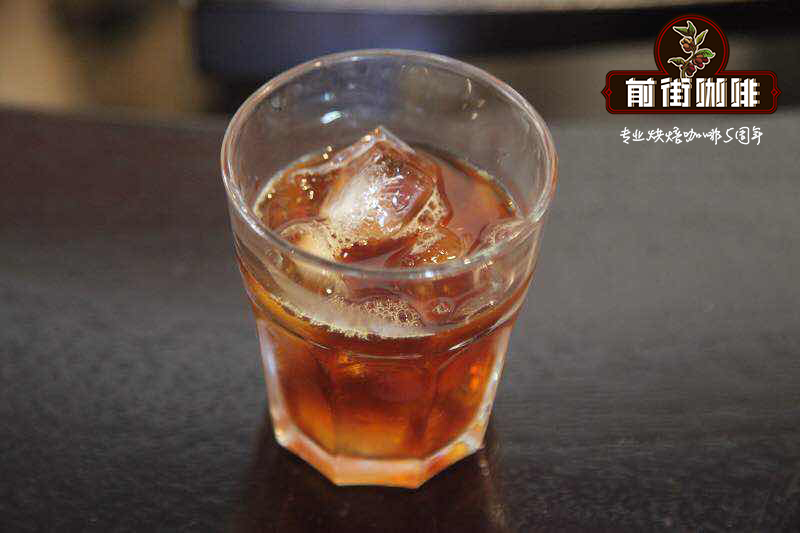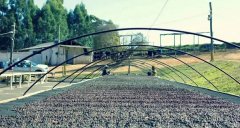How does the pressure change of espresso machine affect the quality of coffee

The key to making espresso is pressure, and the crema, quantity and flavor of espresso all come from the influence of stress.
But why is stress so important? How does it affect concentrated formulations? Why is nine atmospheric pressure the most commonly recommended pressure setting for brewing coffee?
I believe everyone has some questions about the pressure. The author visited Cafflano's Stephen Kim, and Cafflano is the first manufacturer of hand-held espresso machines "Klassic" and "Kompact" on the mass fundraising platform Kickstarter, and let the extraction process of this handheld coffee machine maintain the pressure of nine atmospheres.
The knowledge of stress
Pressure is measured by atmospheric pressure, and the pressure generated by the atmosphere is usually calculated as an atmospheric pressure at sea level.
The usual nine atmospheric pressure (9 bar) when making espresso is nine times the weight of one atmospheric pressure. Stephen said: "espresso has a very long history, and nine atmospheric pressure is recognized as the most suitable pressure to extract espresso." "
In order to make it easier for you to understand and imagine the situation of tire inflation, the tire pressure of most cars is 32 PSI (about 2.2bar) and that of bicycles is 65-85 PSI (about 4.4-5.8bar).
The 9 atmospheric pressure extracted by espresso is as much as 4 times the normal tire pressure.
Control pressure
Imagine that such a high-pressure flow over coffee powder seems to create a mess, so we have to control and apply these nine-atmospheric pressure, which is at the heart of espresso theory.
How do we control stress? You can control the coffee brewing time by filling and pressing the coffee pressed powder.
First of all, let's take a look at the coffee pressed powder. To avoid the confusion mentioned above, we need something to stop the water from being pushed quickly over the coffee powder.
So the first thing to make sure is that the grinding degree of the coffee powder must be very fine, and any coffee can be made into espresso, but it must be extremely fine ground and filled with pressed powder in the brewing handle. This creates a high-density, flat surface that allows coffee powder to block the flow of water.
Then let's take a look at the extraction time, which is a little complicated.
Adjust the flavor of coffee
Although the extraction time may vary slightly, the extraction time of a concentrated dose with nine atmospheric pressure is usually between 25 and 30 seconds. If the pressure is low, it takes more time to extract; if the pressure is high, the extraction time needs to be shortened.
But this part may be a little more complicated, because coffee takes more time to reach the appropriate extraction level, and even if you increase the extraction pressure, the concentration of a 12-second high-pressure extraction will not give you a good drinking experience.
The actual time required for extraction depends on many factors, including grinding thickness, characteristics of coffee itself, water temperature, extraction rate, brewers' habits, etc. As mentioned earlier, there is not much room to change the grinding thickness.
This means that powder content, extraction rate and extraction time are the main variable factors of espresso formula (unless you can use a professional coffee machine that can control pressure and water temperature).
Many people also like to change the pressure of extraction: first pre-soak from low pressure, then use 9 bar of high pressure extraction, and then reduce the pressure extraction to the end. Maxwell Colonna-Dashwood advocates the use of 6 bar pressure for low pressure extraction. There are always many new directions to test for coffee, and our idea of extraction continues to evolve.
However, 9 bar pressure extraction is still the most standard setting. In fact, pressure control can only be used on advanced coffee machines with pressure adjustment.
Why not try to adjust other parameters, such as grindness and water temperature? Take light-roasted and medium-roasted coffee as an example, roasting will degrade the structure of coffee beans, making the substances of coffee beans more soluble in water. Light-roasted coffee can lead to low solubility because of its short roasting time, which can lead to inadequate extraction (such as more sour, almost sour taste) unless it is matched with the correct brewing parameters. that's why many bean bakers bake a special roast that is deeper than hand baking.
To sum up this part, there are many ways to adjust the concentration formula, including changing extraction time, grinding degree, water temperature, pressure and so on. However, finely ground coffee powder is usually used with 9 bar pressure extraction, and conversely, these conditions also set the extraction time of 25-30 seconds.
Of course, there are many key factors to make a good espresso: filling technique and strength, coffee baking date, coffee powder quantity, bean density, quality of machinery and equipment, size of brewing handle filter cup, water quality, hardness, current room temperature, and so on, but these are not the topics to be discussed in this article.
Clarify the confusion brought by Crema
There is still one confusion that we should pay attention to, which is the condensed crema.
"freshly brewed espresso has a beautiful golden crema on the surface, and crema is produced when ground coffee is extracted under 7-9 bar pressure," Stephen said. "
Crema consists of the oil of coffee itself, although it is often defined as an indicator of good quality espresso, but it still depends on the characteristics of the bean itself. For example, washed coffee usually produces less crema, so crema can not be used as an absolute basis for quality.
That said, crema is certainly visually pleasing and customers will like it, but you can't get crema if you don't have enough pressure to extract it.
Espresso machine to maintain pressure
How do we use 9 bar for extraction throughout the extraction process? Spring / pull rods, steam power or pump operations are usually used.
Many coffee shops still use Laba coffee machines because they provide baristas with control over extraction pressure. To operate this machine, you will pull up the lever of the coffee machine and suck in hot water in a vacuum and flow through the brewing handle. this kind of machine requires skill and experience to operate.
On the other hand, when the steam engine boils the water, it forces the water vapor produced by the process through the coffee powder, and this method does not reach the pressure needed to produce crema.
The pump coffee machine is usually the most common type seen by consumers, and this type of machine adds power to the pump to maintain water pressure.
The pressure of household machines and handheld coffee makers
Because it takes machine power and precise parameters to make an espresso, many people think that household functions cannot maintain pressure during the extraction process, especially on more cost-effective models.
However, these equipment manufacturers continue to refine their production technology.
For example, the patent-pending Cafflano uses the Pascal principle to allow the portable coffee machine Cafflano Kompresso to maintain its extraction pressure, indicating that the machine uses fluid mechanics to operate.
The Pascal principle points out: "the pressure acting on an airtight fluid can be transferred from the fluid to all parts of the container, so that the same change will take place anywhere." This sentence may be a little confusing, which means that if you push the fluid from the smaller diameter cylinder to the larger diameter cylinder, the force of the fluid will be magnified.
When you make coffee, there are many factors that can be adjusted: water quality, water temperature, freshness of coffee beans, roasting degree, barista's habits, etc. But if you want a real espresso, you need pressure to extract, and the usual standard of pressure is 9 bar.
Important Notice :
前街咖啡 FrontStreet Coffee has moved to new addredd:
FrontStreet Coffee Address: 315,Donghua East Road,GuangZhou
Tel:020 38364473
- Prev

Where does the sweetness of coffee come from? why is sun treatment sweeter than washing?
Sun-treated coffee is usually sweeter and more mellow than water-washed coffee and usually has a unique fruity flavor. Intuitively, the sweetness, taste and flavor of sun-treated coffee should come from prolonged contact with the sugary, sticky pulp of coffee fruit, but is there any evidence to prove it? If not, what will happen? Is natural coffee high in sugar? Coffee beans
- Next

Italian Coffee embossed Coffee Coffee course Coffee embossed Tulip how is it made?
Professional coffee knowledge exchange more coffee bean information please pay attention to the coffee workshop (Wechat official account cafe_style) Coffee pull has always attracted a lot of girls. A good-looking coffee flower does not increase the taste of the coffee, but it can put you in a good mood to taste the cup of coffee. In this issue, baristas will teach you to pull an embossed tulip! There are two flowers in the preparation stage.
Related
- What is the meaning of lactic acid fermentation with coffee bean treatment?
- How to judge the state of foam by sound?
- How does the latte pull out the unicorn pattern? Come to get for a little trick to improve the flower pull!
- Will flower pulling affect the taste of the latte?
- Do you know the history of coffee?
- The difference between honey treatment and sun washing what is raisin honey treatment?
- What kind of milk can a novice use to make coffee foam to keep the foam longer? The correct method and skills of milking tutorial sharing
- Why do washed coffee beans taste sour? Flavor characteristics of washed Coffee
- Introduction to the skill of how to practice the size and height of water injection around the circle of hand-brewed coffee
- How do beginners practice coffee flower drawing from scratch?

